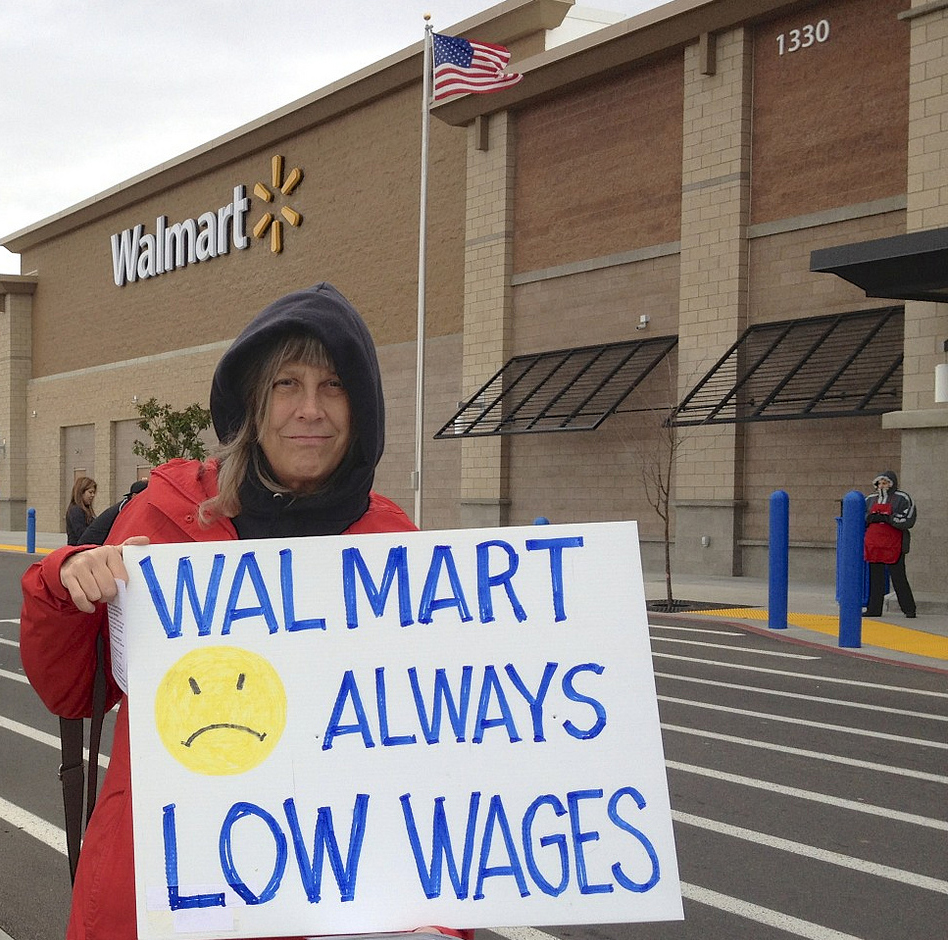
We are all familiar with the standard textbook argument for why minimum wage is harmful to job creation. The standard view, which in political discourse has also come to be known as the conservative view, holds the minimum wage to be bad for all concerned. And yet, there is a conservative view to be made in favor of the minimum wage, and regular increases in the minimum wage, on the grounds that its neglected macroeconomic effects also would militate against another thing that conservatives hold to be equally as bad: redistribution.
The standard view, often referred to as the competitive model, is predicated on the assumption that market clearing wages are achieved when the demand for labor is exactly equal to the supply for labor. In such a market, there is no such thing as unemployment because wages either rise or fall until the demand for labor is exactly equal to the supply of labor. All those willing to work at a wage where demand equals supply will be employed. If more people are willing to work, the wage will fall further, thereby inducing firms to hire more workers, with the result being that once again the supply of workers equals demand. And when firms are unable to hire as many workers as they would like, wages will then rise to induce more people to enter the labor market, until supply and demand are again equal.
A minimum wage, then, prevents the cost of labor from dropping below that minimum. When the minimum wage is higher than the market clearing wage, fewer workers will be hired than are willing to work, with the result being either unemployment or higher productivity. Employers will either not hire unskilled workers whose abilities do not justify the higher wages or they will substitute technology for workers, thereby leading to higher productivity. If they do not lay workers off, they will cut back on other benefits. The standard view, however, makes one fundamentally flawed assumption that easily blinds us to the positive welfare effects and macroeconomic benefits associated with a minimum wage.
It assumes that workers are responsible for their own employment. If they simply reduce their wage demands, employers will demand their labor services. But the principal determinant of whether workers will be hired is aggregate demand. If there is not enough aggregate demand for goods and services, it matters not how low workers reduce their wage demands: there will be no jobs for them. Ironically, if workers lower their wage demands and earn less, they will have less ability to demand goods and services in the aggregate. Although the standard view holds that prices will fall as wages falls, there are limits to how far those prices can fall given employers’ fixed costs. Moreover, as recent trends in productivity growth show that employers have not shared those gains with their workers, it is questionable as to whether they would really lower prices rather than pocket the labor savings.
The macroeconomic benefits should be fairly straightforward: as higher wages will afford workers greater purchasing power, they in turn will be able to demand more goods and services. As they do this, businesses will produce more, and in turn hire more workers, which may have the inevitable result of bidding up wages across the board. This was the basic macroeconomic argument that underpinned the Fair Labor Standards Act when it was passed in 1938. But because there are wage contour effects, an increase in the minimum wage can be expected to have ripple effects through much of the wage distribution. Therefore, the minimum wage not only benefits those at the bottom of the distribution, but the larger middle class.
This is important because conservatives like to justify their anti-statist approach to economic and social problems on the basis of what benefits the middle class. Of course, they claim that lower taxes will benefit the middle class, as that will effectively give workers more purchasing power. But a minimum wage that benefits the middle class and has the macroeconomic benefit of increasing aggregate demand for goods and services and, ultimately, more jobs also should lead to lower taxes because more people working should lead to fewer living off the largesse of the state. In other words, the conservative case for the minimum wage rests on the assumption that the positive welfare effects of the minimum wage will lead to less redistribution, which occurs through taxation. Milton Friedman used to argue that redistribution was bad because it infringes individual liberty.
A higher minimum wage, which enables individuals to work and live in dignity, is really about enhancing personal autonomy, without which individual liberty is meaningless. Although conservatives might counter that minimum wage redistributes from employers to employees, it is not the same type of redistribution found in government public assistance programs. When employers pay their workers a wage, and even a higher minimum wage, they are still getting work from their workers in exchange. In fact, because better paid workers will feel better about their work, their morale increases, their productivity rises and, ultimately, so does overall efficiency. The minimum wage is then an efficiency wage rather than redistribution. Without a doubt, this type of redistribution should be worse than the effects predicted by the standard view, which are ambiguous at best. Therefore conservatives who seek to help the middle class would do well to consider the minimum wage as a first step.

